Is a Four-Cylinder GMC Sierra 1500 a Better Buy Than a Mid-Size Truck?

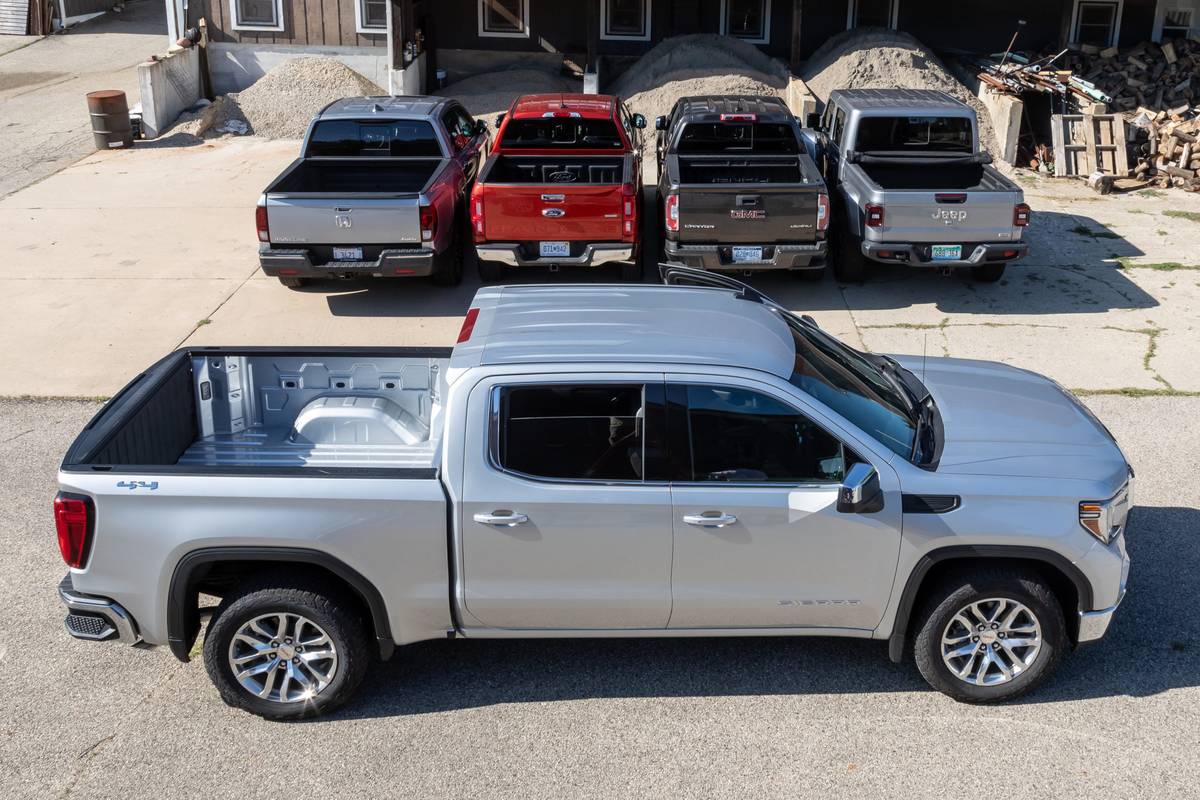
Our recent test of four mid-size pickup trucks came with an unusual sidebar: One of our support vehicles was a 2019 GMC Sierra 1500 SLE crew cab 4×4 with the base turbocharged 2.7-liter four-cylinder engine and eight-speed automatic transmission. Yep, a full-size pickup equipped with a peppy turbo four-banger and a cloth interior, but rocking a full four doors, a cavernous cabin, four-wheel drive and the latest multimedia goodies. For $51,395, including the destination fee, this Sierra was just a few grand more than most competitors in our 2019 Mid-Size Pickup Challenge, so we wondered if its full-size, crew-cab layout wouldn’t be a better alternative to one of the smaller mid-size trucks. We tested acceleration, braking and fuel economy to see how the four-cylinder Sierra measures up to the mid-sizers to answer the question of which you would rather have. Expensive and small, or expensive and expansive?
Related: Ready for a Mid-Size Truck? We Rank 4 of the Best
Sierra Tested Alongside Its Juniors
For 2019, the new turbocharged 2.7-liter four-cylinder engine in Chevrolet and GMC 1500s is mated to an eight-speed automatic transmission and offered with standard rear-wheel or optional four-wheel drive. In the GMC, it’s available only on certain trims and configurations — SLE and Elevation trim levels in double cab and crew cab only. It makes an impressive 310 horsepower and 348 pounds-feet of torque, so this is no wimpy four; it’s more powerful than some V-8 engines were just a few years ago. It also outguns all the engines in our mid-size pickups for power and torque, including the ones sporting much larger V-6 engines. However, that’s balanced by the Sierra weighing more than any of the mid-size trucks, and not by just a little bit more. Tipping the scales at 5,100 pounds exactly, the Sierra was 320 to 580 pounds more than the field we compared it against.
| ENGINE OUTPUT | Horsepower | Torque |
| GMC Sierra turbo 2.7-liter four-cylinder | 310 @ 5,600 rpm | 348 @ 1,500 rpm |
| GMC Canyon 3.6-liter V-6 | 308 @ 6,800 rpm | 275 @ 4,000 rpm |
| GMC Canyon 3.6-liter V-6 | 285 @ 6,400 rpm | 260 @ 4,400 rpm |
| Honda Ridgeline 3.5-liter V-6 | 280 @ 6,000 rpm | 262 @ 4,700 rpm |
| Ford Ranger turbo 2.3-liter four-cylinder | 270 @ 5,500 rpm* | 310 @ 3,000 rpm* |
*Ranger requires 91 octane or higher for maximum performance
| AS-TESTED CURB WEIGHT | Pounds |
| Honda Ridgeline 3.5-liter V-6 | 4,520 |
| Ford Ranger turbo 2.3-liter four-cylinder | 4,560 |
| GMC Canyon 3.6-liter V-6 | 4,640 |
| Jeep Gladiator 3.6-liter V-6 | 4,780 |
| GMC Sierra turbo 2.7-liter four-cylinder | 5,100 |
Better Gas Mileage?
The Sierra is more powerful and heavier than the mid-sizers, so what does that mean for gas mileage? Well, if you’re buying a mid-size pickup because you want better mileage than you can get in a full-size truck, allow me to remove that purchase consideration. The Sierra 4×4 with the turbo 2.7-liter is EPA rated at 19/22/20 mpg city/highway/combined. On our 200-mile test loop, the Sierra returned an observed combined result of 22.4 mpg. That puts it solidly fourth out of the lineup of mid-size trucks behind the 23.7 mpg of the most-efficient Ford Ranger and the 23.3 mpg of the second-place Honda Ridgeline, coming in just short of the 22.8 mpg of the Jeep Gladiator, but beating the other GMC in this test, the GMC Canyon with its 21.7 mpg rating. That’s an astonishing performance for a truck that’s 460 pounds heavier than its Canyon brand mate, and goes to show you what a “downsized and boosted” powertrain strategy can do for a truck when it’s executed well. Suffice it to say that this was the first instance in our Challenge testing that we declared our preference for the Sierra’s powertrain over the Canyon’s, and it wouldn’t be the last.
| FUEL ECONOMY | MPG |
| Ford Ranger turbo 2.3-liter four-cylinder | 23.7 |
| Honda Ridgeline 3.5-liter V-6 | 23.3 |
| Jeep Gladiator 3.6-liter V-6 | 22.8 |
| GMC Sierra turbo 2.7-liter four-cylinder | 22.4 |
| GMC Canyon 3.6-liter V-6 | 21.7 |
Better Performance?
What about acceleration and braking? At the drag strip, the turbo Sierra was mid-pack in the field, going from zero-to-60 mph without payload in just 7.61 seconds and making the quarter-mile in 15.59 seconds at 88.54 mph. That makes it quicker to 60 mph than the Honda and Jeep, which required 7.67 seconds and 8.40 seconds, respectively. It bested them in the quarter-mile, too, with the Honda running a best time of 15.76 seconds at 88.75 mph and the Jeep needing 16.41 seconds and topping out at 86.10 mph. The Ford Ranger was still the quicker to 60 mph at 7.21 seconds with the GMC Canyon close behind at 7.31 seconds, but these numbers are so close that in the real world, you’re not likely to notice much difference.
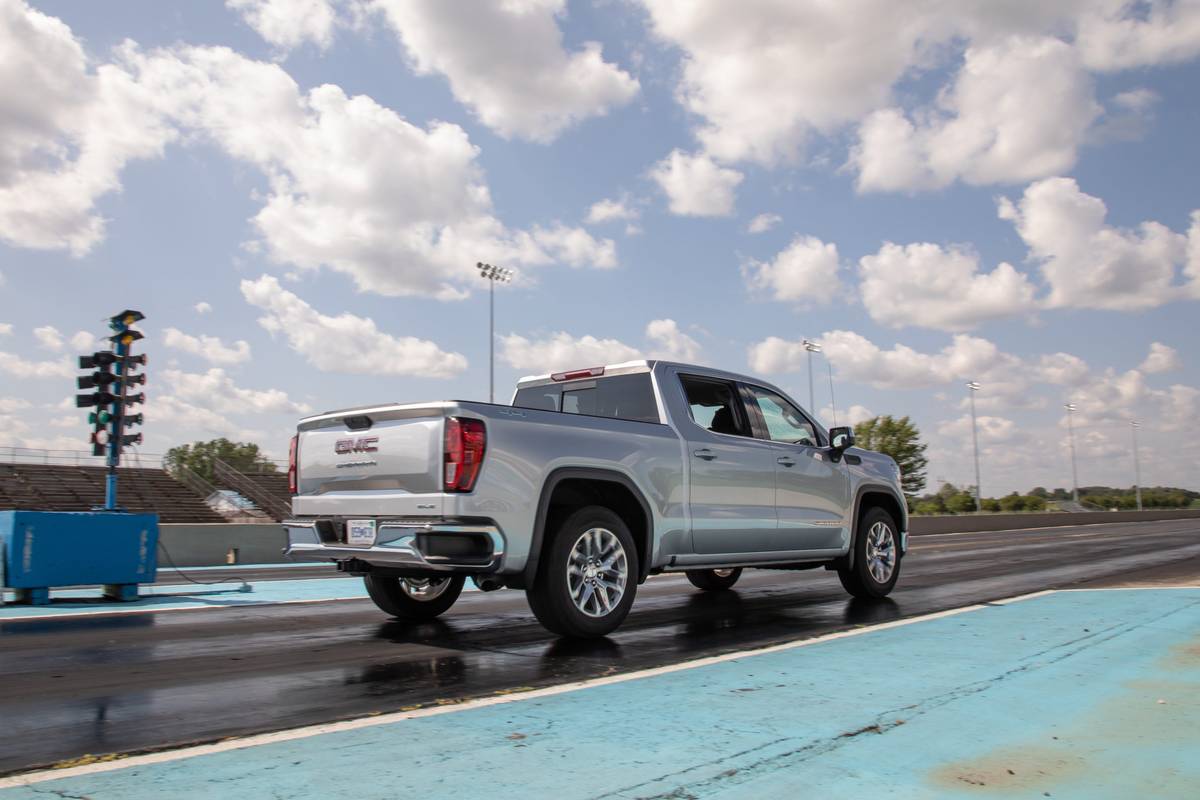
It certainly doesn’t feel pokey or slow, not in the slightest. The turbocharged powertrain in the Sierra is extremely responsive; you’re not likely to miss having a bigger engine if you’re mainly using your truck for commuting duty. It easily keeps up with smaller vehicles, both in acceleration and braking, and feels equally sprightly — actually sprightlier than the Canyon. But the trade-off is size; yes, the Sierra is a much bigger truck, but it also comes with many of the drawbacks of such a vehicle. More on that in a bit.
| ACCELERATION | Zero-to-60 mph (seconds) | Quarter-mile (seconds at mph) |
| Ford Ranger turbo 2.3-liter four-cylinder | 7.21 | 15.43 @ 89.57 mph |
| GMC Canyon 3.6-liter V-6 | 7.31 | 15.45 @ 91.19 mph |
| GMC Sierra turbo 2.7-liter four-cylinder | 7.61 | 15.59 @ 88.54 mph |
| Honda Ridgeline 3.5-liter V-6 | 7.67 | 15.76 @ 88.75 mph |
| Jeep Gladiator 3.6-liter V-6 | 8.40 | 16.41 @ 86.10 mph |
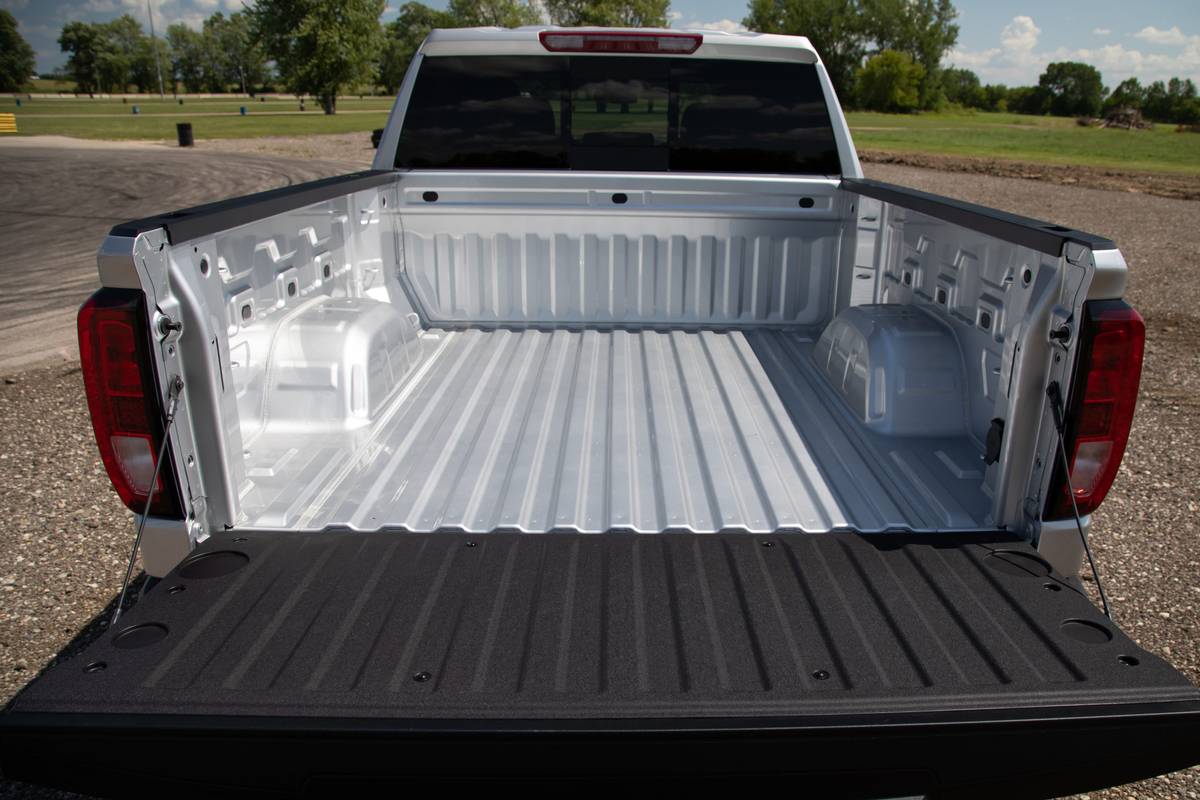
It Carries More, but Doesn’t Tow Like a Full-Size
The maximum payload for the Sierra is 1,851 pounds, according to the nifty little sticker on its door (customized for each GM full-size truck based on that specific truck’s from-the-factory equipment list). That’s less than you’d get on a Sierra 1500 4×4 crew-cab model with a beefier powertrain, however, which can accommodate up to 2,070 pounds in the bed, depending on how you spec it. We haven’t towed anything with a four-cylinder Sierra (yet), but the truck says that it can handle a trailer only up to 6,600 pounds, which is less than what most of the mid-sizers are rated to handle. The Ford is rated for 7,500 pounds; you can do up to 7,650 for the Jeep if you spec it right; it’s 7,700 pounds for the GMC (with a diesel four-cylinder), but just 5,000 for the minivan-based Honda. Towing isn’t a priority for many mid-size truck owners, and it looks like you probably won’t want to with your four-cylinder Sierra either.
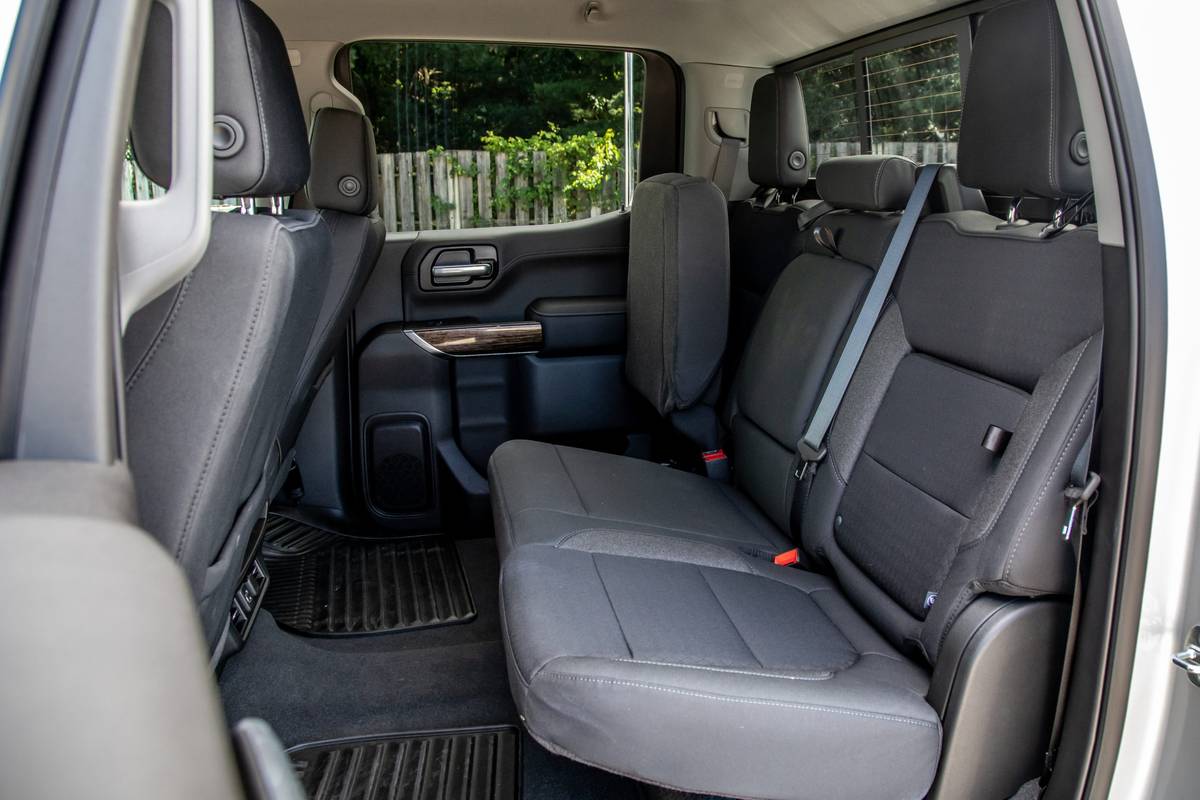
More Space, But Is That Wise?
It goes without saying that the Sierra’s cabin was a far more comfortable and spacious place than any of the mid-size trucks. The numbers tell the tale: Rear legroom alone is indicative of the size disparity, with 43.4 inches listed for the Sierra, more than 5 inches more than the Gladiator’s best of 38.3 inches and nearly 9 inches more than the 34.5 inches given to you in the cramped back seat of the Ranger. In every dimension, the Sierra is a much bigger truck, but that also counts against it when comparing with a mid-size truck. The benefit of going for a mid-size truck over a full-size is that it is far easier to park and maneuver in parking lots and urban environments. Unless you absolutely need all that room in the Sierra, such as using it for family duty or work, a lot of it is simply unused empty space. Piloting the Sierra through Chicago’s tight downtown streets, where Cars.com is headquartered, was much more stressful than any of the mid-size trucks, which didn’t require two attempts to get into parking spots, or extra mindfulness when navigating through crowded intersections. It not only measures big, it feels big. You’re also much more likely to be able to fit a mid-size truck in a standard home garage, whereas the long and beefy Sierra almost certainly won’t. It’s more than 19 feet long tip to tail, nearly 2 feet longer than the shortest mid-sizer, the Ridgeline. If you’re living out in rural America, that may not be such a big deal. But even in suburban environments, where the sheer size of the Sierra may be more comfortable, its bulk is still a lot less daily-driver friendly versus the mid-size trucks.
Which Is Better?
As with all vehicle purchases, how you use your truck really determines what kind you need. If you’re shopping in the mid-size category, chances are you value utility and frugality over space and beefiness. Mid-size trucks are far easier to drive, simpler to park, they tend to be decently efficient and they cost less than their full-size counterparts. But if you’re willing to pay a little more and your usage doesn’t involve trying to squeeze your ride into an urban parking garage, the GMC Sierra 1500 four-cylinder is a compelling alternative.
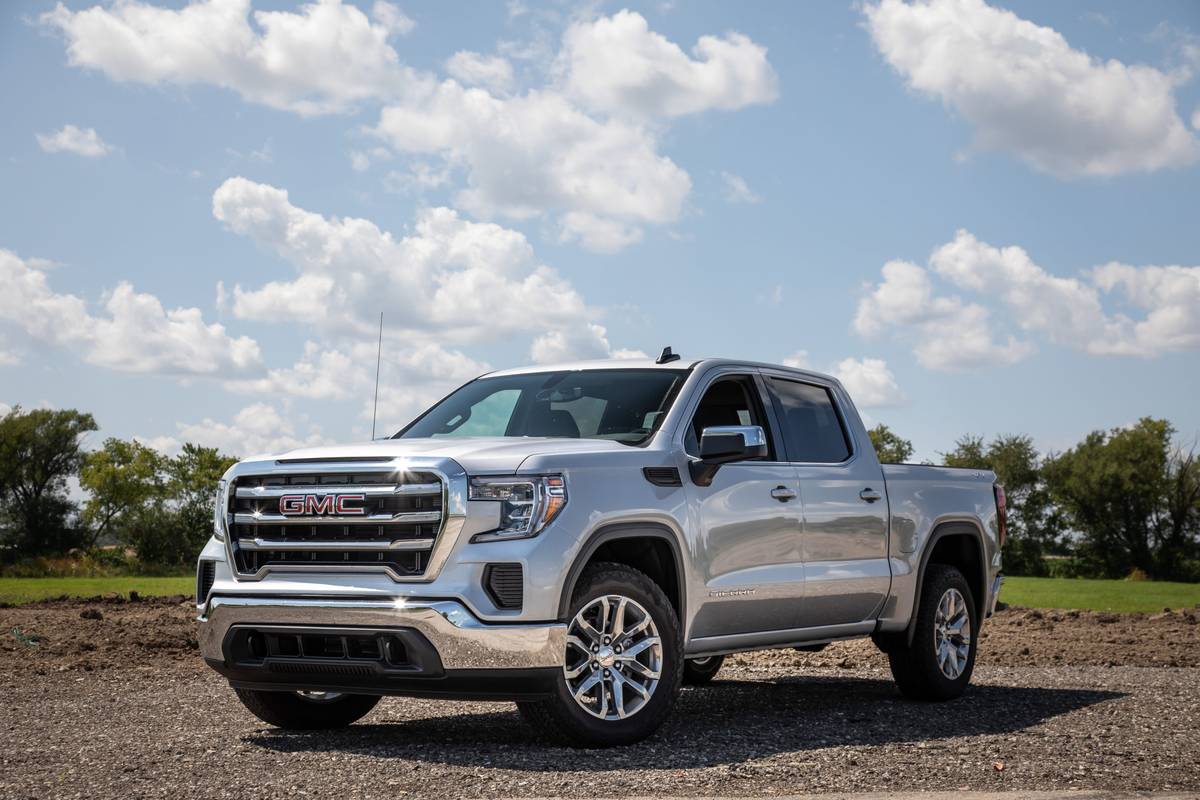
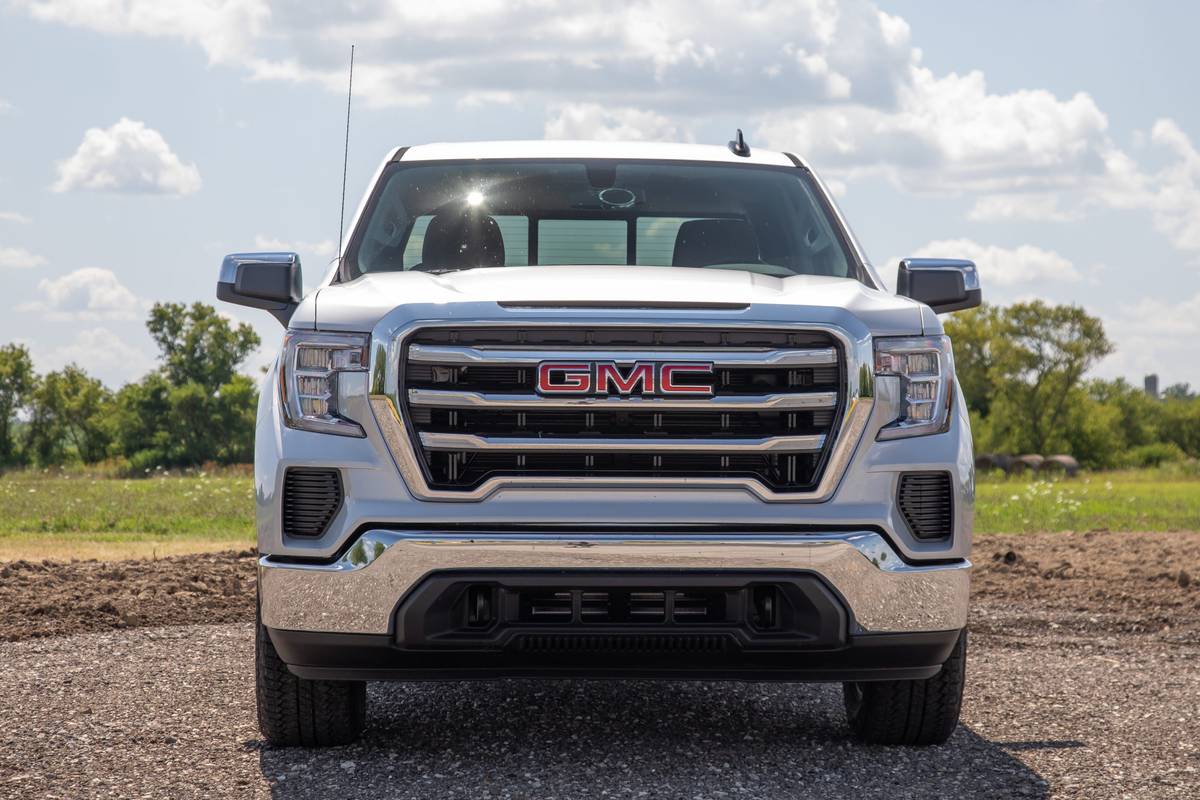
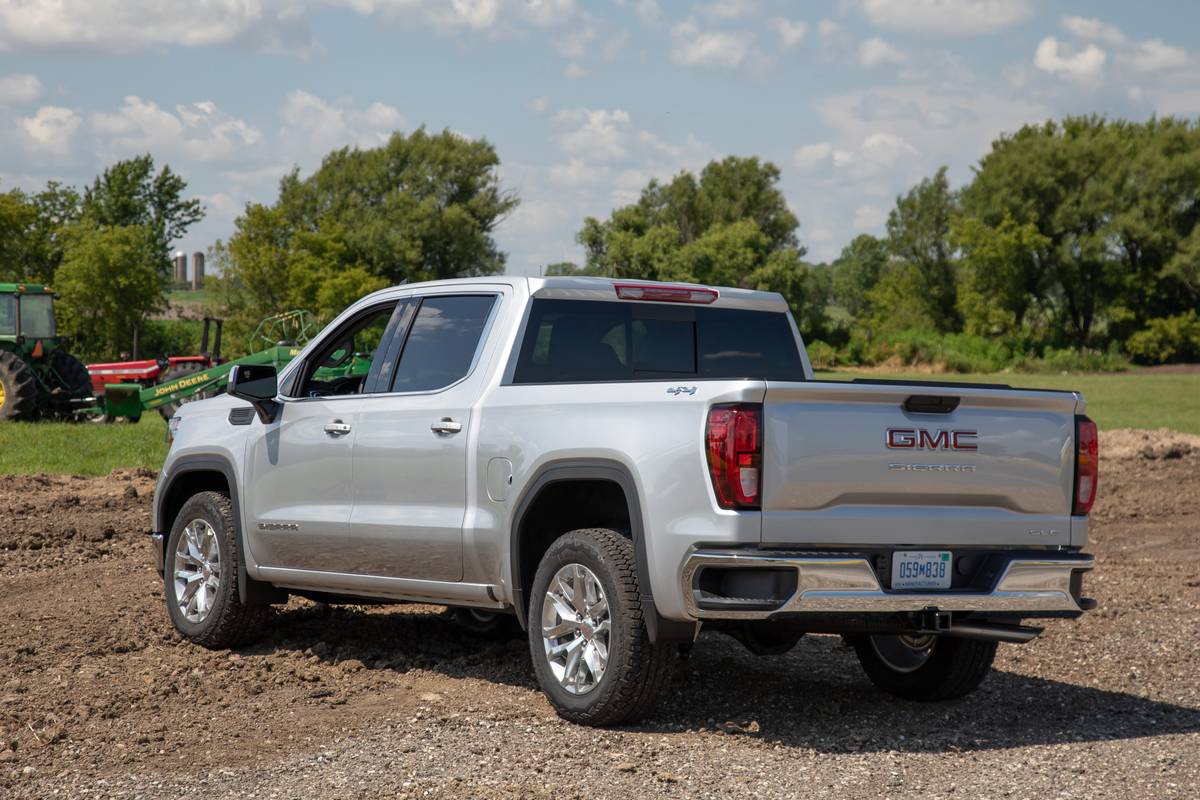
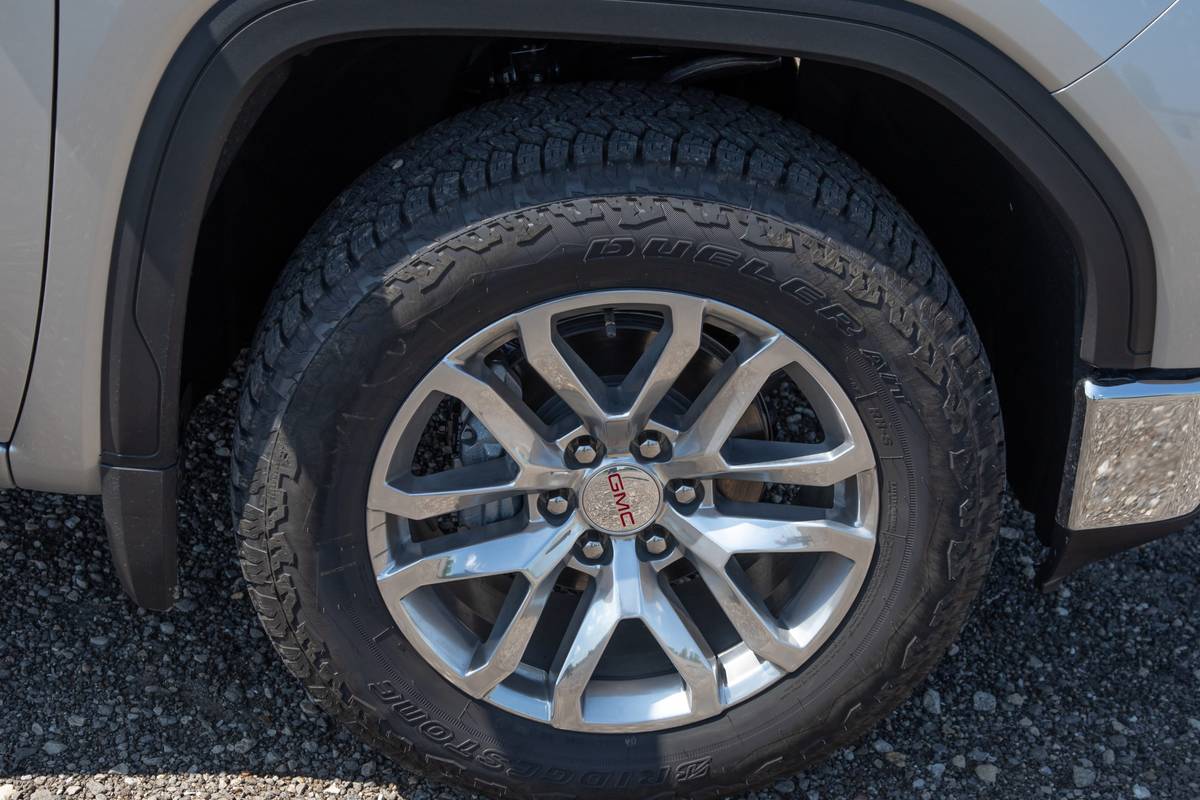
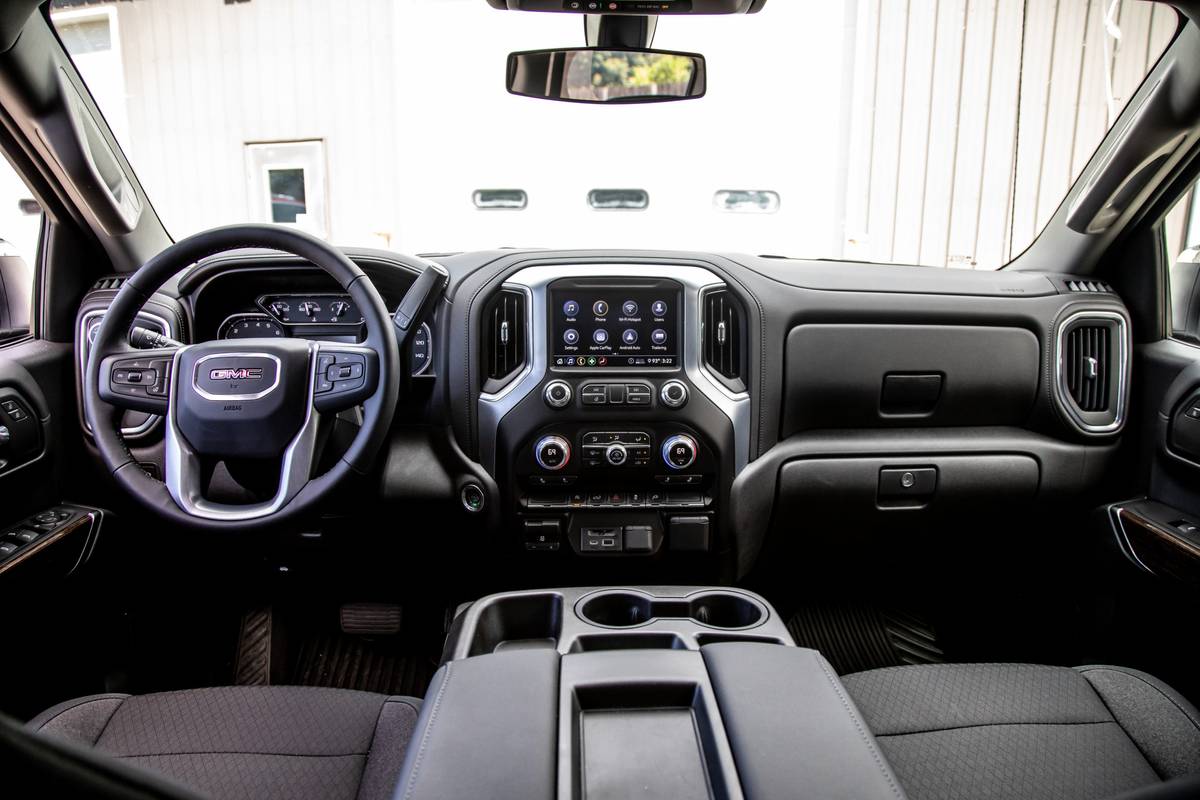
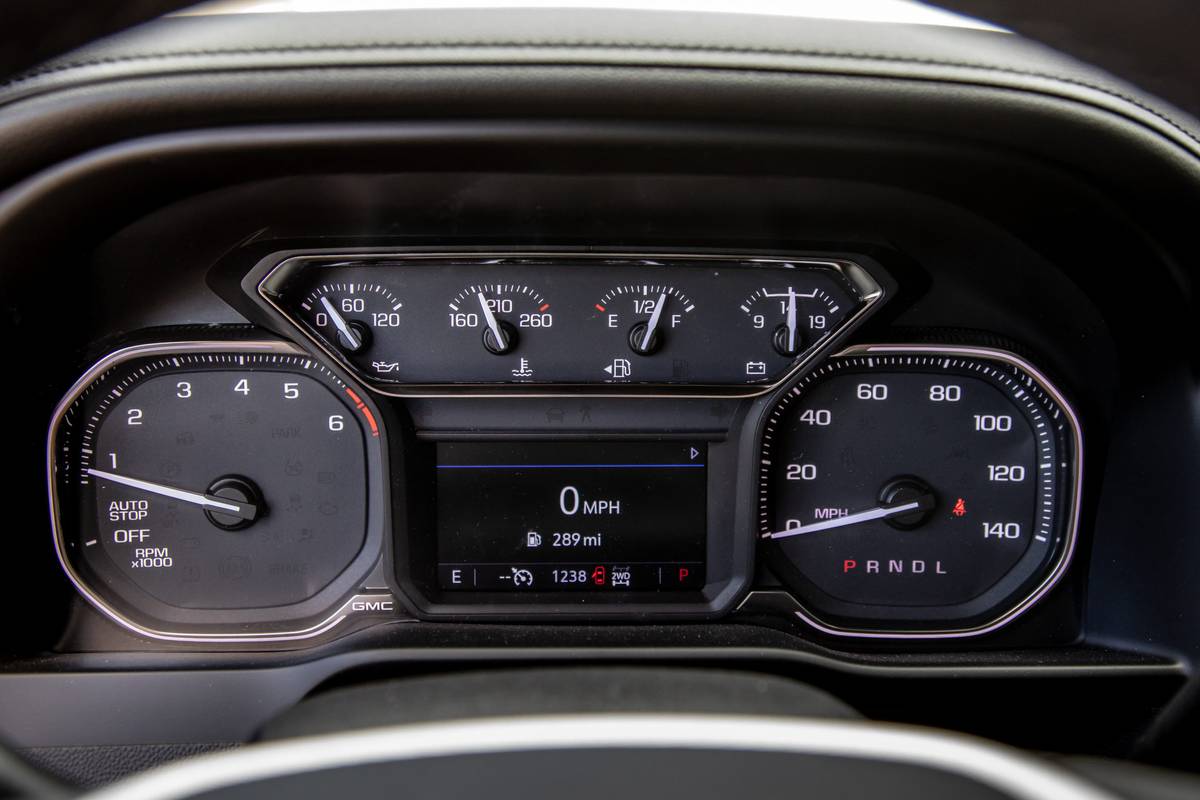
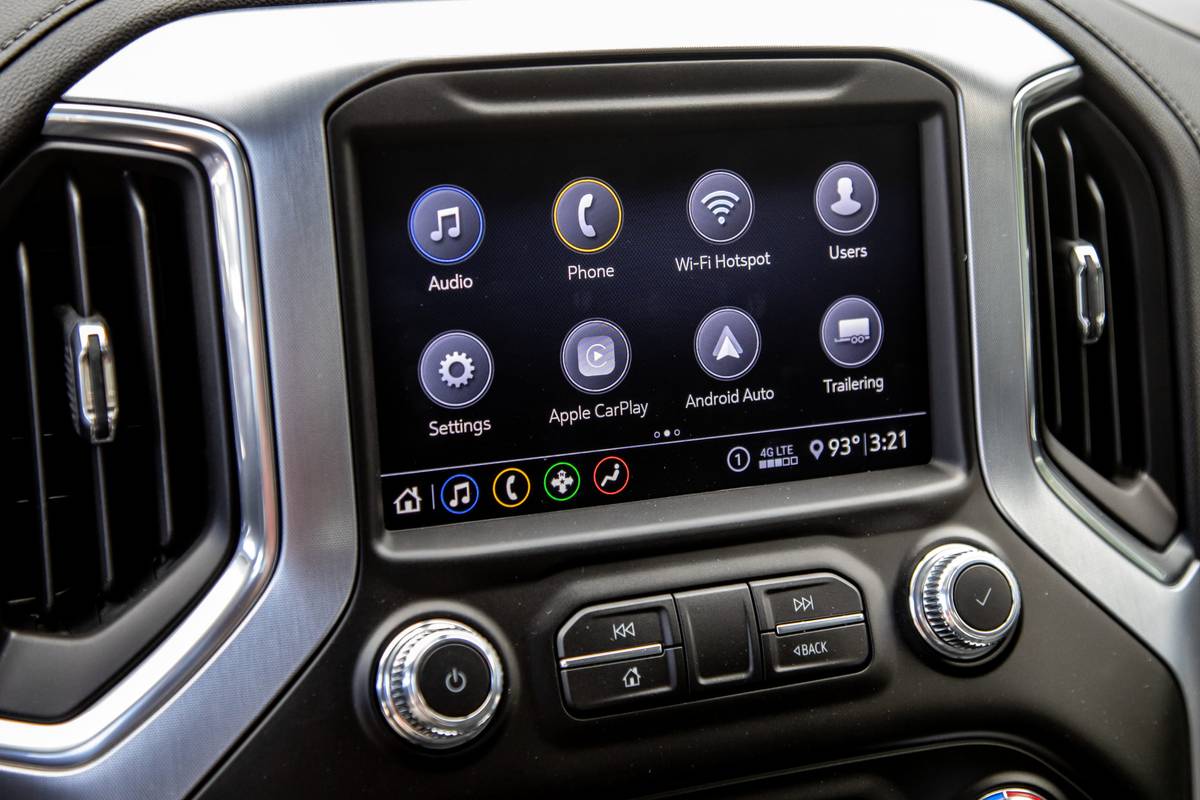
Cars.com’s Editorial department is your source for automotive news and reviews. In line with Cars.com’s long-standing ethics policy, editors and reviewers don’t accept gifts or free trips from automakers. The Editorial department is independent of Cars.com’s advertising, sales and sponsored content departments.

Detroit Bureau Chief Aaron Bragman has had over 25 years of experience in the auto industry as a journalist, analyst, purchasing agent and program manager. Bragman grew up around his father’s classic Triumph sports cars (which were all sold and gone when he turned 16, much to his frustration) and comes from a Detroit family where cars put food on tables as much as smiles on faces. Today, he’s a member of the Automotive Press Association and the Midwest Automotive Media Association. His pronouns are he/him, but his adjectives are fat/sassy.
Featured stories
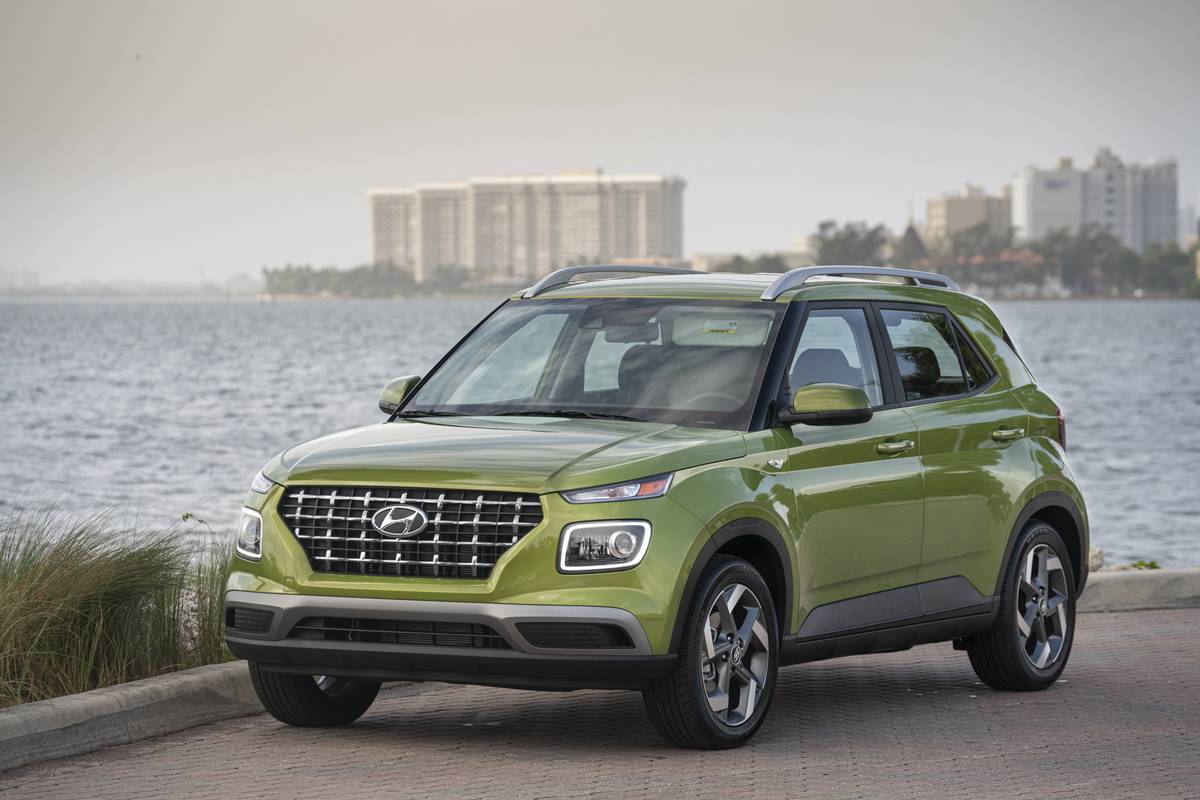
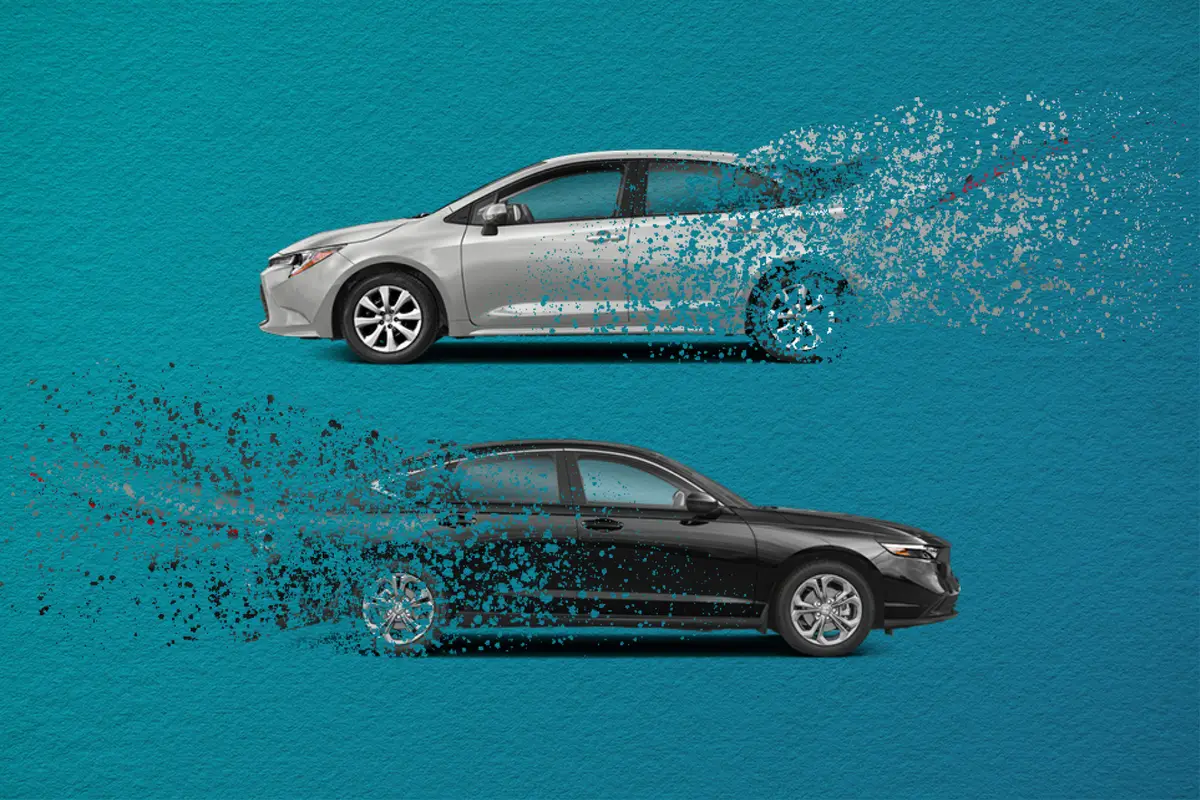
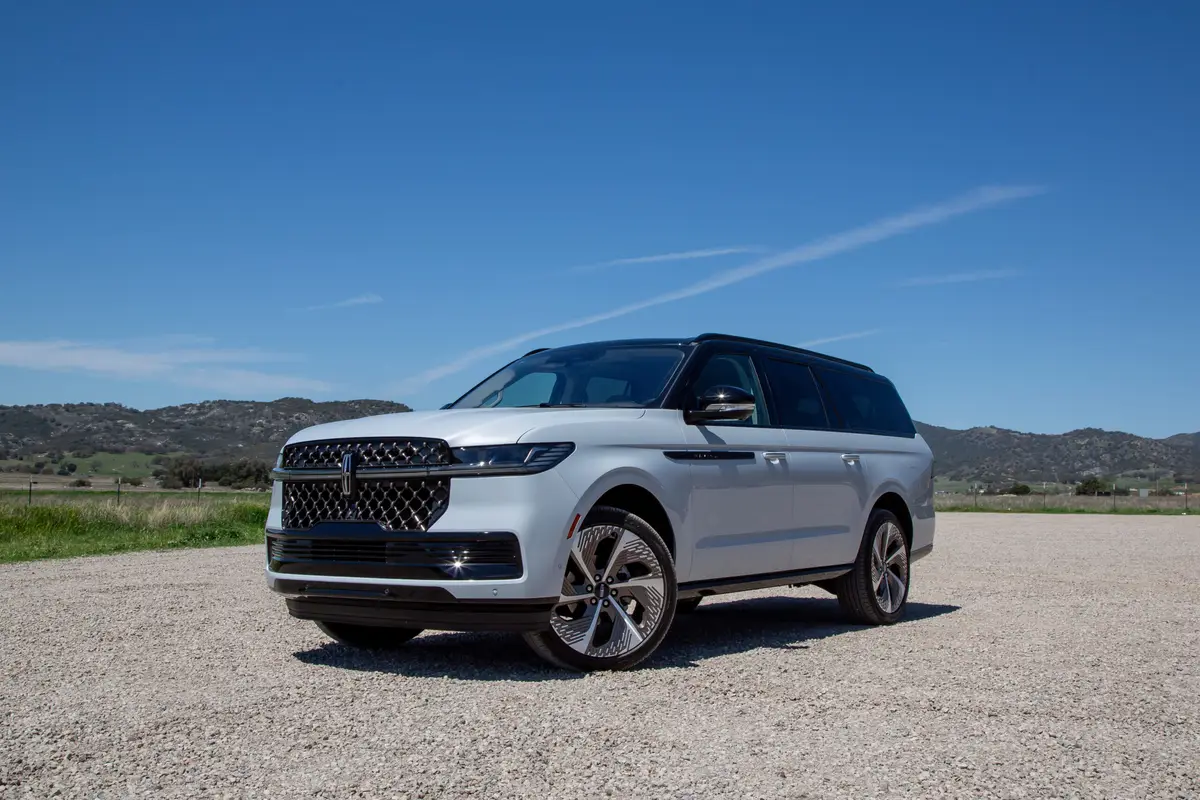
2025 Lincoln Navigator Review: Elephantine Elegance

